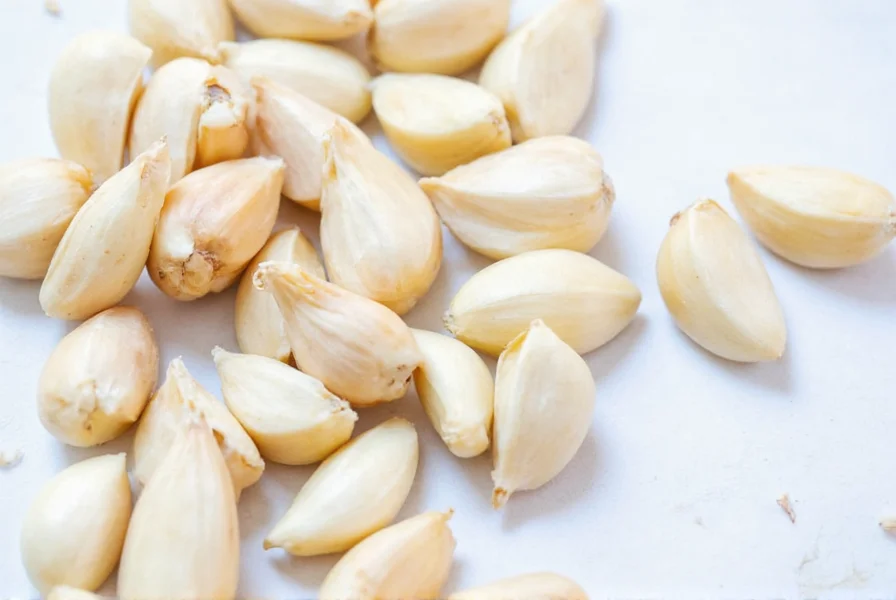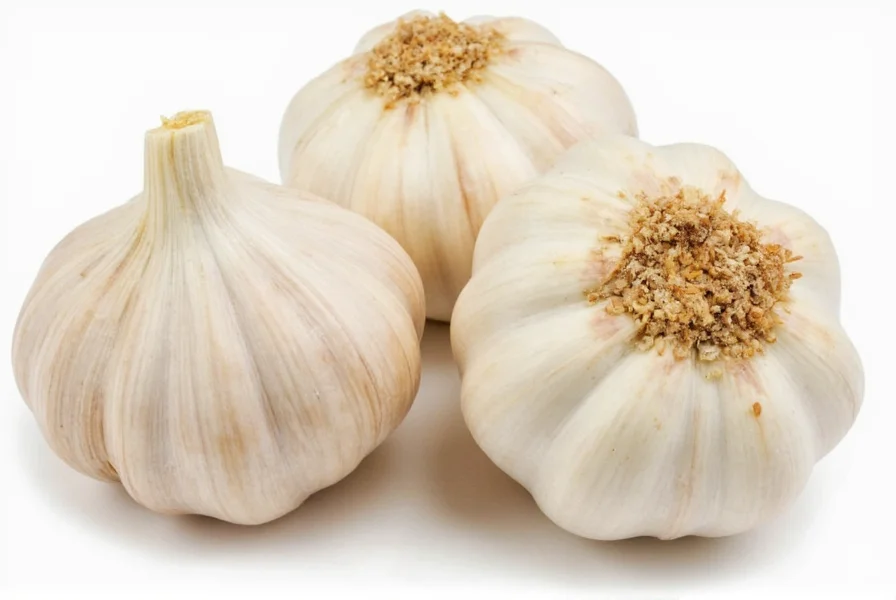Understanding garlic measurements is essential for achieving the perfect flavor profile in your cooking. Many recipes call for garlic cloves without providing alternative measurements, which can be confusing when you're working with pre-minced garlic, garlic powder, or other garlic products. Getting these conversions right makes a significant difference in your final dish.
Why Garlic Measurements Matter in Cooking
Garlic intensity varies dramatically based on its form and preparation. Fresh garlic cloves contain essential oils that create that distinctive pungent flavor when crushed or chopped. When you substitute different garlic forms without proper measurement conversion, you risk either under-seasoning your dish or overwhelming it with excessive garlic flavor.
The enzymatic reaction that occurs when garlic is cut or crushed creates allicin—the compound responsible for garlic's characteristic taste and aroma. This reaction happens most intensely with freshly prepared garlic, which is why pre-minced garlic in jars often has a milder flavor profile than freshly minced cloves.
Complete Garlic Measurement Conversion Guide
Here's a detailed reference for converting between different garlic forms. These measurements assume average-sized garlic cloves, as size can vary between garlic heads.
| Garlic Form | 1 Clove Equivalent | 2 Cloves Equivalent | 4 Cloves Equivalent |
|---|---|---|---|
| Fresh Garlic (peeled) | 1 clove | 2 cloves | 4 cloves |
| Fresh Garlic (minced) | 1 teaspoon | 2 teaspoons | 1 tablespoon + 1 teaspoon |
| Garlic Powder | 1/8 teaspoon | 1/4 teaspoon | 1/2 teaspoon |
| Garlic Paste | 1/2 teaspoon | 1 teaspoon | 2 teaspoons |
| Bottled Mince Garlic | 1/2 teaspoon | 1 teaspoon | 2 teaspoons |
Factors That Affect Garlic Measurements
When converting garlic measurements for your recipes, consider these important factors that affect how much how much is 2 cloves of garlic really means in practice:
Clove Size Variability
Garlic cloves vary significantly in size. A single clove from a standard grocery store bulb typically measures 1-2 inches long and 1/2 inch in diameter, but specialty varieties can be much larger or smaller. When precision matters, weighing your garlic provides the most accurate measurement—approximately 3-7 grams per average clove.
Freshness Impact
Fresher garlic delivers more intense flavor than older bulbs. As garlic ages, it loses moisture and potency, meaning you might need slightly more older garlic to achieve the same flavor impact as fresh garlic. This is particularly relevant when considering how many teaspoons is 2 garlic cloves from older bulbs.
Preparation Method
How you prepare garlic dramatically affects its potency:
- Minced finely: Releases maximum flavor compounds
- Sliced: More subtle flavor infusion
- Whole roasted: Sweet, mellow flavor with minimal pungency
Practical Substitution Guidance
When substituting different garlic forms in recipes, keep these practical tips in mind to maintain the intended flavor balance:
Using Garlic Powder Instead of Fresh
Garlic powder has concentrated flavor, so you need less. For how much minced garlic equals 2 cloves in powder form, use 1/4 teaspoon garlic powder. Remember that garlic powder lacks the moisture content of fresh garlic, so you may need to adjust liquid ingredients slightly in baking or sauce recipes.
Working with Pre-Minced Garlic
Bottled minced garlic typically contains preservatives that mellow its flavor. When determining garlic clove to tablespoon conversion for pre-minced products, you'll generally need about 50% more than fresh minced garlic to achieve equivalent flavor. Two cloves of fresh garlic usually equals about 1 teaspoon of commercial minced garlic.
Adjusting for Recipe Type
The ideal garlic measurement depends on your specific dish:
- Cold dishes (salads, dressings): Use slightly less garlic as flavors don't mellow during cooking
- Long-simmered dishes (stews, braises): Garlic flavor mellows, so you can safely use more
- Raw applications (pesto, aioli): Start with less and adjust to taste as raw garlic is more intense

When Precision Matters Most
While approximate conversions work for most everyday cooking, certain recipes demand more precise garlic measurements:
- Delicate sauces where garlic can dominate other flavors
- Baking applications where chemical reactions affect flavor development
- Preserving recipes where proper garlic-to-acid ratios affect safety
- Professional recipe development requiring consistent results
For these situations, consider weighing your garlic rather than relying solely on volume measurements. A kitchen scale provides the most consistent results when working with garlic measurement equivalents across different recipes.

Common Garlic Measurement Mistakes to Avoid
Many home cooks make these common errors when converting garlic measurements:
- Using equal volumes - treating 1 clove as equal to 1 teaspoon of powder (it's actually 1/8 teaspoon)
- Ignoring freshness - not adjusting for older, less potent garlic bulbs
- Over-substituting - using garlic powder in recipes that specifically require fresh garlic's texture
- Not tasting as you go - especially important when using bottled minced garlic which varies by brand
Remember that the question how much is 2 cloves of garlic doesn't have a single universal answer—it depends on your specific recipe requirements, garlic freshness, and personal taste preferences.
Frequently Asked Questions
How much jarred minced garlic equals 2 cloves of fresh garlic?
Two teaspoons of jarred minced garlic typically equals 2 fresh garlic cloves. Commercial minced garlic often contains preservatives that mellow its flavor, so you may need slightly more than fresh minced garlic to achieve equivalent flavor intensity.
Can I substitute garlic powder for fresh garlic in all recipes?
Garlic powder works well as a substitute in dry rubs, spice blends, and cooked dishes, but isn't ideal for recipes where fresh garlic's texture or raw bite matters. For most cooked dishes, use 1/8 teaspoon garlic powder per clove of fresh garlic. Remember that garlic powder lacks the moisture content of fresh garlic, which may affect recipe consistency.
Why does my garlic substitution taste different than expected?
Differences in flavor occur because various garlic forms have different potency levels and release flavor compounds at different rates. Fresh garlic provides enzymatic reactions that create complex flavors during cooking, while powdered or pre-minced garlic delivers more consistent but less dynamic flavor. Always adjust to taste when substituting.
How do I adjust garlic measurements for roasted dishes?
Roasting mellows garlic's flavor significantly, so you can safely use 25-50% more garlic in roasted dishes compared to raw applications. For example, if a recipe calls for 2 raw cloves, consider using 3-4 cloves when roasting to achieve similar flavor intensity in the final dish.
Does the size of garlic cloves really matter in recipes?
Yes, garlic clove size varies considerably—sometimes by 300% between small and large cloves. For precision cooking, especially in baking or preserving, weighing your garlic (approximately 3-7 grams per average clove) provides more consistent results than counting cloves. When a recipe specifies "large" or "small" cloves, follow those size indications for best results.










 浙公网安备
33010002000092号
浙公网安备
33010002000092号 浙B2-20120091-4
浙B2-20120091-4